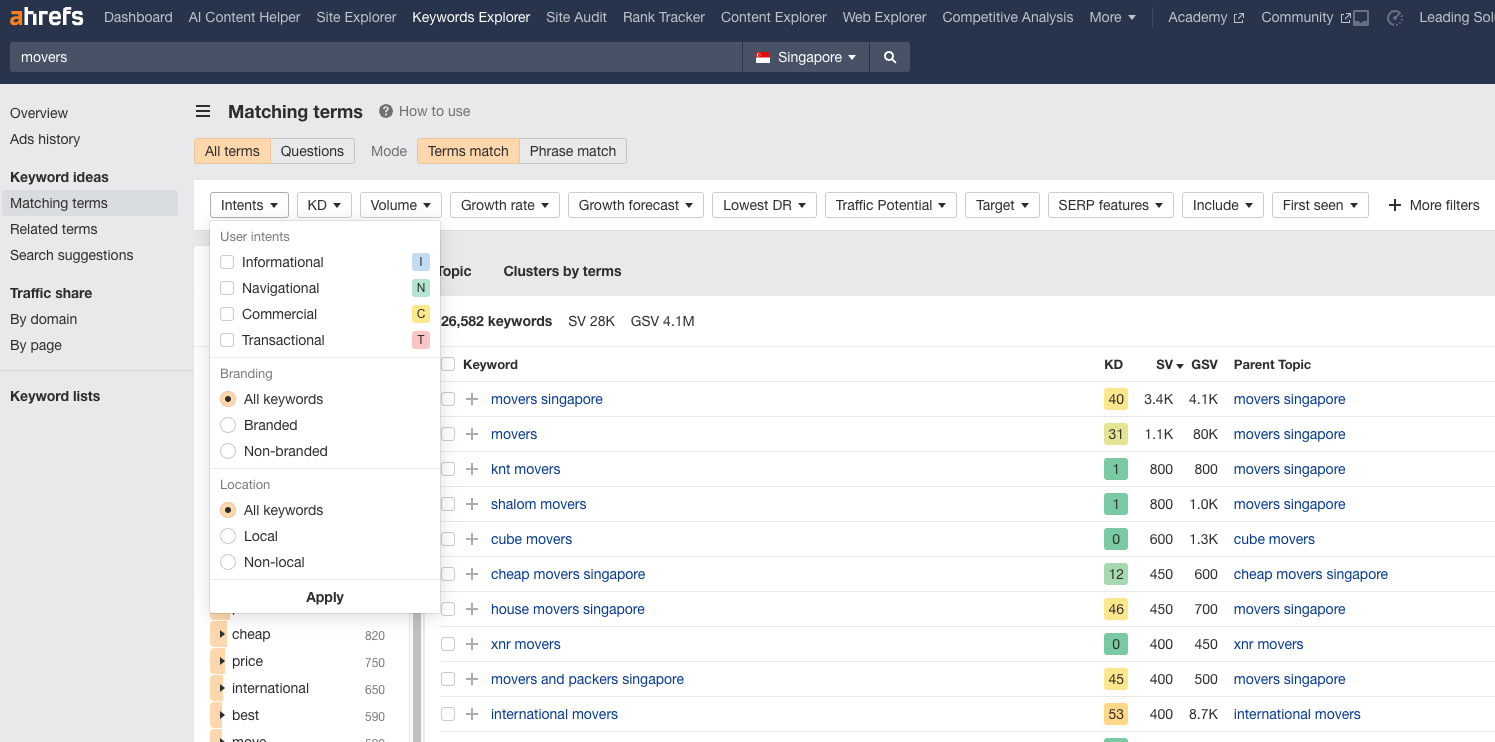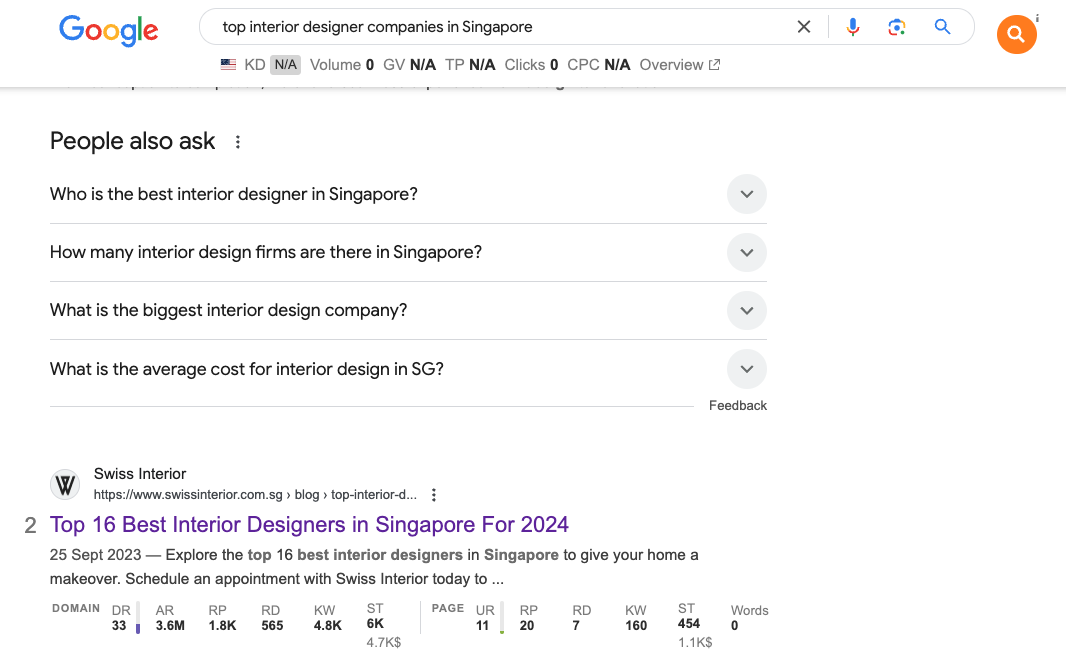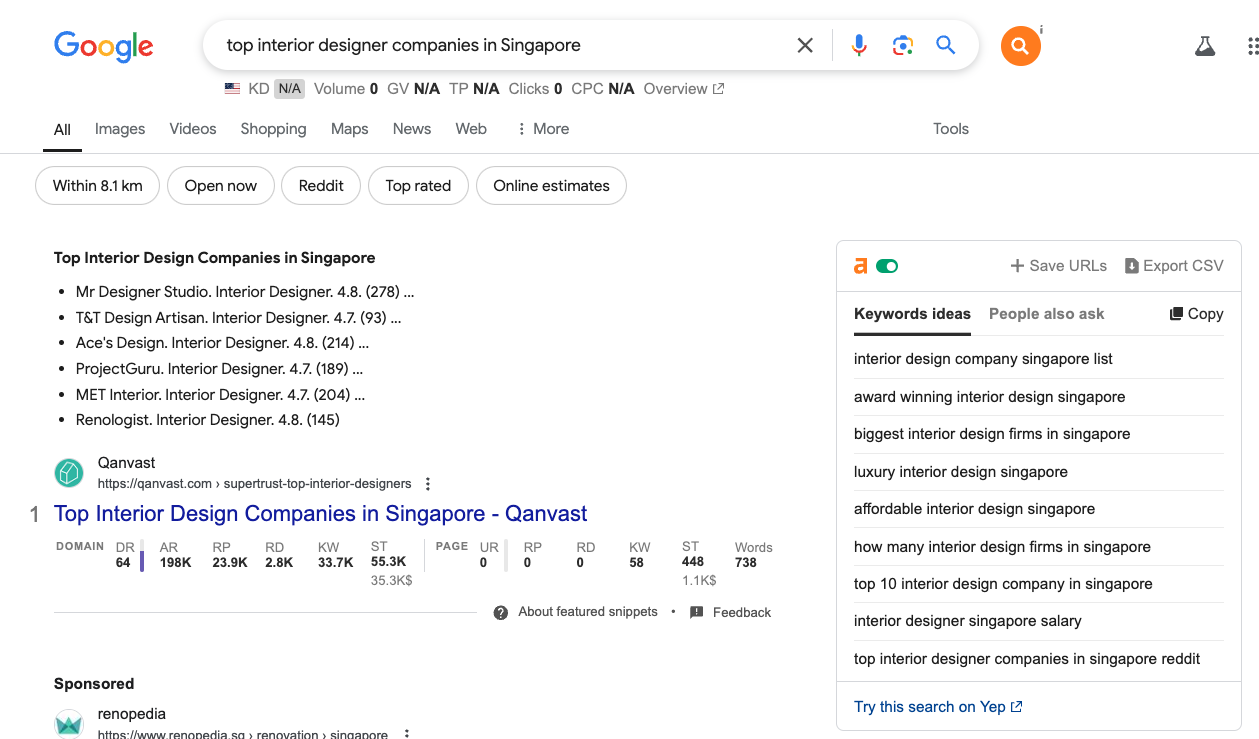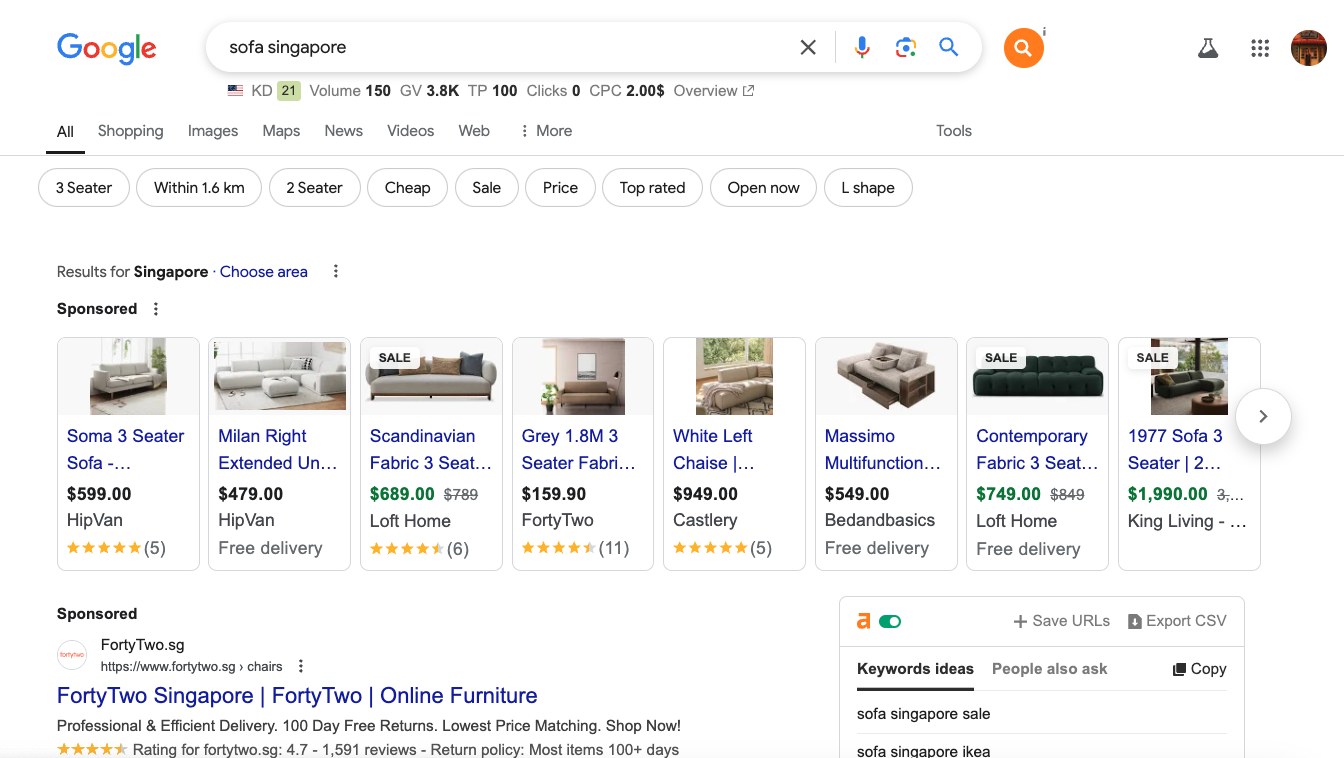How We Optimise Your On-Page SEO
4. On-Page SEO
4.1. Understanding Google - Search Intent
Perhaps the most important thing is to understand what the customers who are searching want.
Are they looking to buy a particular product or service? Are they looking for a consultation? Or do they simple want to read up more on this topic?
Understanding SEO search intent has helped us serve more relevant information to users and thus help the overall quality score, user engagement metrics and conversion rates.
Read also: Master Intent-Driven Keyword Research Strategies in 2024
Read also (Ahrefs): What Is Search Intent?
4.2. Establishing Credibility (Google’s E-E-A-T Guidelines)
From the onset, Google has been tackling the issue of misinformation or inaccurate content. Since Google is just an algorithm, how can they differentiate content that is credible from ones that are not credible?
Enter Google’s EEAT guideline, where they trust the “brand” and give sites with credible brands a much higher-ranking over those that do not have such a high credibility.
We found this to be exceptionally true in the medical, finance, legal and healthcare SEO, with our own clients benefitting directly from establishing credibility. Read more about Google’s EEAT guidelines.
4.3. Implementing the right on-page SEO
On-page SEO analysis and updates, which includes:
- Meta-title, description
- Page title, headers
- Keyword density optimisation
- Image alt text optimisation
By placing optimised keywords (and also keeping an eye out for over-optimisation) along with matching with search intent, we have consistently generated high rankings for our clients.
Read also: Top On-Page SEO Ranking Factors to Optimize for Better Search Results
FAQ
What do you mean by having a search intent in mind?
When a user searches for a particular query on search engines, these queries can typically be grouped into a few different intentions, such as:
- Informational
- Navigational
- Commercial
- Transactional

Our job is to give the users what they are looking for. For example, when looking for top interior designer companies in Singapore, these are the top results (left). However, searching for another query, such as “sofa singapore”, you can clearly see the featured snippets from the different e-commerce sites popping up, along with only product pages.


If you were to write a blog about sofa and how to pick a right one, it will never do as well in SEO as compared to a product or e-commerce page. Similarly, if you are creating an e-commerce page (somehow if you are able to) for top interior designers, it will likely never do well.
Key is, Google treats search intent seriously and this is a key part for any on-page SEO.

